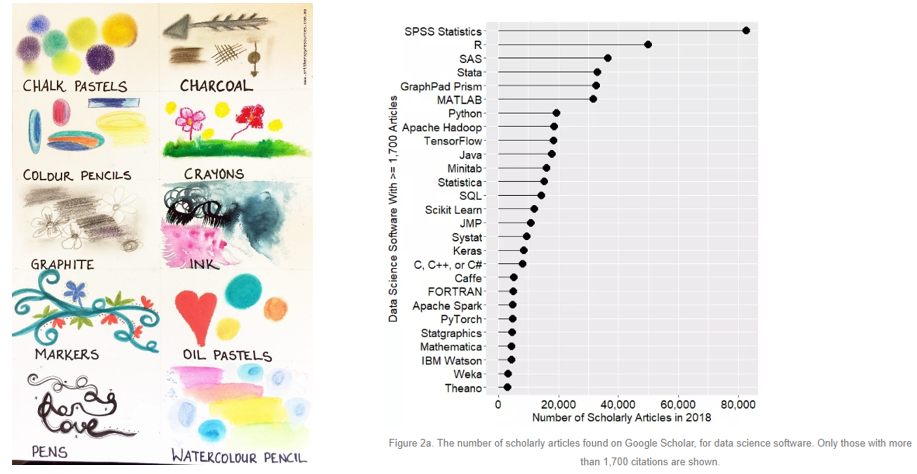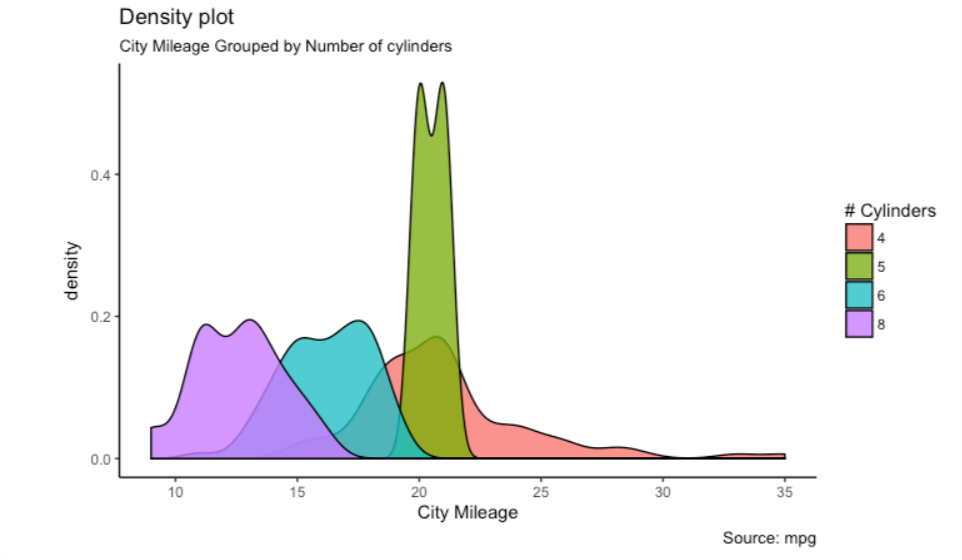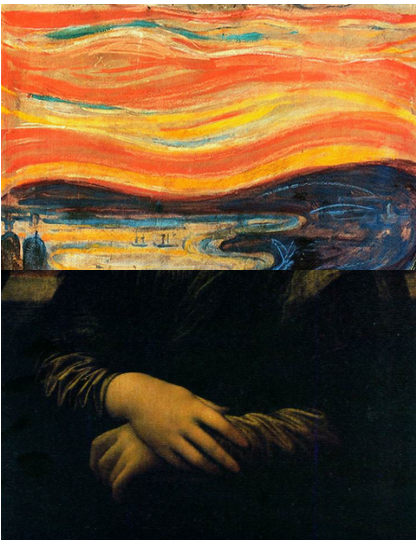I’ve heard many statistical experts exclaim that
‘Statistics is an art!’
This being usually in reference that, like with artistic techniques, there is not one definitive rulebook which details all statistical techniques and how to apply them in every type of situation. Both subjects have a huge variety of working utensils to which to conduct your ‘art’ as shown below (*and note these are just a few! )

With so many different mediums to conduct your statistical analysis it’s no wonder so many find it intimidating and complex. However what statistical experts don’t mention is like art, statistics is a learnt skill meaning you can start with some basic principles and build your skills and knowledge.
In some ways statistics can be easier than art. Say you want to copy your favourite Bob Ross painting, you can buy the right shade of titanium white and other utensils but despite doing everything ‘right’ it still isn’t a perfect replication. But with statistics you can share your working and data, meaning that two people with the same conditions can produce the same results making it very effective for collaboration.
You can even combine the two subjects to produce some pretty graphs

As you have probably already noticed, I am quite enthusiastic about statistics and its benefits. I developed this interest during my undergraduate studies specialising in econometrics modules (an economist’s term for statistics) and went onto apply them during my Masters and PhD theses. It is also noted that I apply statistics for ‘fun’* for example finding out what days of the week I burn more calories, spoiler weekends are not more statistically higher.
(*editors comment - this is very true, I have never seen Denise more animated then when she excitedly announced she had discovered (through analytics) that genderless pokemon are more likely to have 'legendary' status!)
In our local analytics partnership we are always looking to build upon our range of skills. With support from our colleagues at the University of Essex we have spent a lot of the month of September revising some core statistical approaches (and developing some new ones). It is important we integrate this learning into our work so that the picture we are painting becomes clearer and more complete. After all, if we only saw the top half of Edvard Munch's Scream, or the bottom half of Da Vinci's Mona Lisa, we are not getting the full story.

Like art, a good teacher can help guide you in applying statistical techniques. If you would like to learn more about statistical techniques and how to apply them (either within your work, or for fun) contact me via email Denise.Lovett@essex.gov.uk